



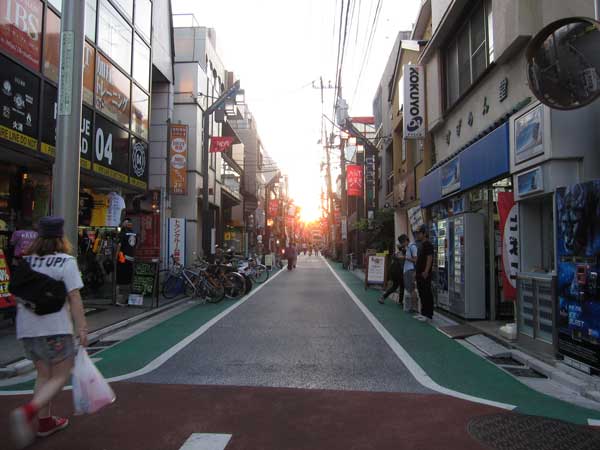
最近、よくこの下北沢の商店街に行きます。日暮れはとてもきれいです。自転車で行けて、おいしいコーヒーのお店があります。東京の商店街には、いろいろ小さな店があります。商店街のデザインは散歩したり、ぶらぶらしたりすることがしやすいようになっています。古いけれど、商店街のストリートデザインはヨーロッパとアメリカで人気が出てきています。どうして都庁は車を支持して、商店街を支持しないのでしょう?
Recently I have been spending more time on this Shimokitazawa shoutengai, or commercial strip full of very small businesses. This one is northwest of the station, and somewhat hard to find. What’s great is its combination of shops run by old timers alongside imported hipster clothes, one of Tokyo’s best coffee shops called Bear Pond that roasts their own beans, a hookah bar, and at least ten hair salons.
There are thousands of these shopping streets in Tokyo, near transit stations and along routes that connect homes, workplaces, schools, and leisure areas. It’s strange that Tokyo Metropolitan Government is still so focused on cars and their movement across the city at the expense of walking and biking and other forms of common space usage. There is little government recognition or support for the idea that these relics of past decades are in fact some of Tokyo’s most forward-looking urban public spaces.
Lively pedestrian zones are common in Europe, and becoming more so in many cities in the United States. By not segregating cars, pedestrians, and bicycles, the street pace slows down to pedestrian speed while still allowing passage for delivery trucks and cars. The way the street is painted makes it appear even more narrow, providing further social cues about speed and usage.
Many of Tokyo’s shoutengai are suffering as consumers shift towards shopping at big box stores and driving as a primary form of transportation. The city government is truly looking backwards when it promotes automobile usage and fails to recognize the value of these vernacular public spaces that support human interaction and the environment.
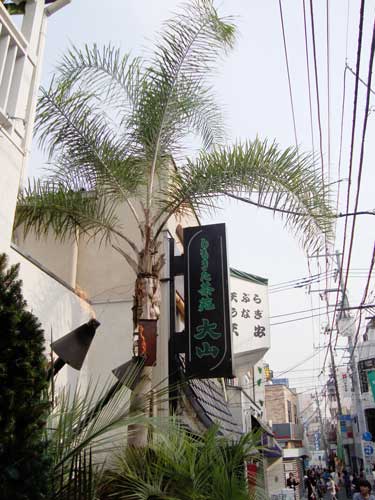
On the north side of Shimokitazawa, there is a Hawaiian restaurant with palm trees that are unusual for Tokyo. The tall palm tree with a silver trunk is a Queen Palm, syagrus romanzoffiana, native to woodland Brazil and Argentina and very common in San Francisco and other cold climates. It looks somewhat like a coconut palm.
The restaurant is clearly using these gorgeous palms– along with tiki torches and up-lights lit even during the day, a water fountain, and a wood porch extending to the street– as signifiers of exotic and distant islands. The effect is rather surprising and a pleasant contrast from the neighborhood’s narrow and crowded streets with few real street trees.
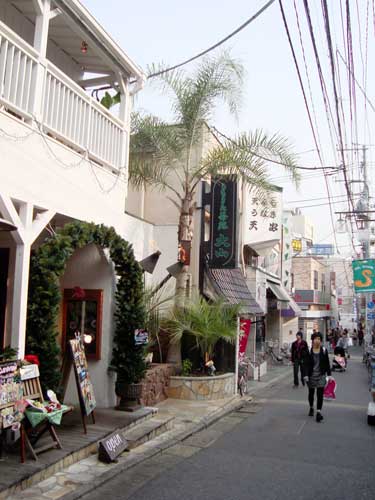
The trees look very healthy. I wonder if the restaurant provides special protection in the winter. The small palm tree is also very appealing. It is a Pindo Palm, or butia capitata, native to Brazil and Uruguay. Since it is hardy to 9C (15F), it seems well suited to Tokyo.
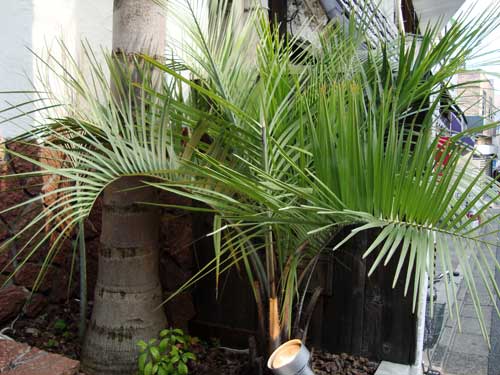
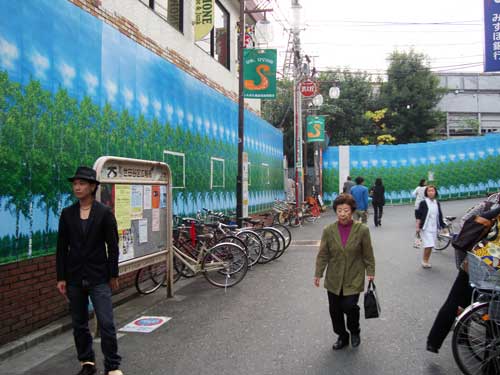
Visiting Shimokitazawa last week for a meeting, CScout Japan‘s Michael Keferl pointed out the (fake) forest surrounding the north entrance to the Shimokitazawa train entrance. It’s funny how I had failed to notice this endless forest.
It extends on three walls from the station all the way past the horizon.
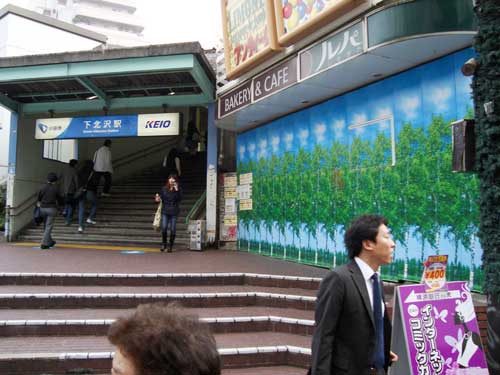
Construction is a constant in urban Japan. It seems the rail line, landlord or construction company wants to add a natural “feeling.” Recently I saw a construction wall lined with real bamboo.
Are there other low-cost ideas for temporary construction? Something that can be re-used from site to site?